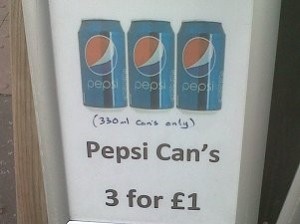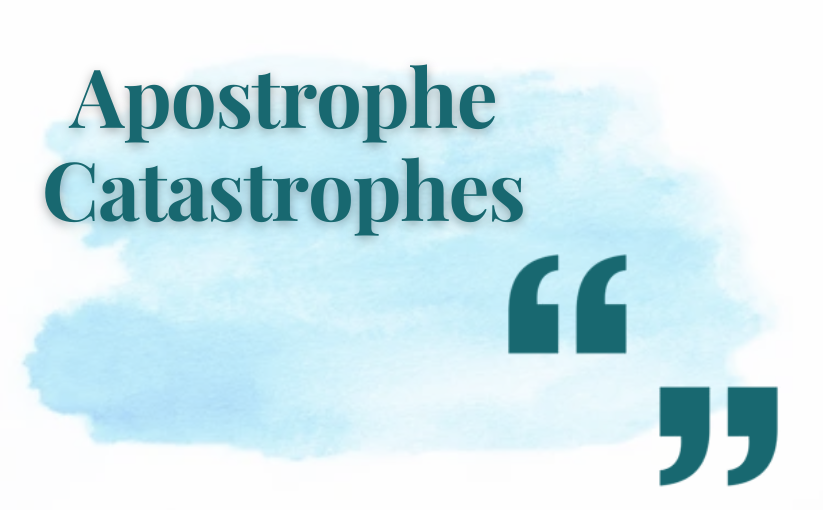Apostrophes are one of the most battered punctuation marks in the history of English grammar. All you need to do is look at the billboards, marquees, street signs and roadside advertisements, and you will realize that only a very minuscule minority actually knows how to correctly place their apostrophes. Let us have a look at some hilarious apostrophe catastrophes:






The thing is apostrophes are very tricky and are often used incorrectly. And what makes it even worse is that this tiny little punctuation can change the meaning of the entire sentence if placed wrongly. However, before we get into the rights and wrongs (and not right’s and wrong’s) of the apostrophe use, let us first understand what it is and why is it used. Apostrophes are used to contact a word and designate absent letters. For instance, don’t for do not; won’t for would not and it’s for it is. They are also used to signify possession – girl’s dress, man’s dog, David’s blog and so on. It is their multiple usage that often leads to confusion. Here are some of the most common errors that you must avoid while using your apostrophes:
- Plurals
One of the most common mistakes is using an apostrophe to make a singular word plural. For instance:
Incorrect: There are many cat’s and bird’s in our backyard.
Correct: There are many cats and birds in our backyard.
The only exception to this rule is using an apostrophe to make single letters plural. For example: Three C’s of diamond quality.
- It’s and Its
This is another common confusion – mixing up the it’s and its. While ‘Its’ represent possession, as in, the parrot ate its chillies; it’s is contraction of two words ‘It is’, as in It’s going to be a sunny, warm day.
- Their, There and They’re
Again, these three similar looking words are often misused and change the meaning of the content:
Their is for ownership. This is their car.
There is for place or direction. I have kept your books there.
They’re is short for ‘They are’. They’re going to the beach tomorrow.
- Your and You’re
While ‘your’ indicates possession; ‘you’re’ is reduction of ‘you are’
Are these your parents?
You’re a good boy.
- Whose and Who’s
Whose is a possessive pronoun and who’s stands for ‘who is’.
Whose turn it is to arrange the party?
Who’s going to the movies with Jason?
Even the most seasoned writer can make these apostrophe errors in a hurry. Here are some apostrophe rules that you must remember to avoid these mistakes:
- If apostrophe is indicating possession for a plural noun that ends with s, then it will not be followed by another ‘s’. Clowns’, bananas’, apples’, toys’, etc.
- In a compound noun, add an apostrophe to the last element. Mother-in-law’s, President-elect’s, etc.
- Apostrophes are also used to indicate the omitted initial digits of a year. Class of ’85; era of the ‘90s; age of ‘60s and so on.
- Never use apostrophes in plural nouns that are not possessive. CDs, 100s and 1930s, etc.
- Never use apostrophes in verbs like sees, finds or marks.
If you are still in doubt ever, the best way to go about it will be to think about the meaning of the word -is it a combination of two words, or is it a possessive noun. This will help you grasp a better understanding of the word and you will never use your (and not you’re) apostrophes incorrectly!


